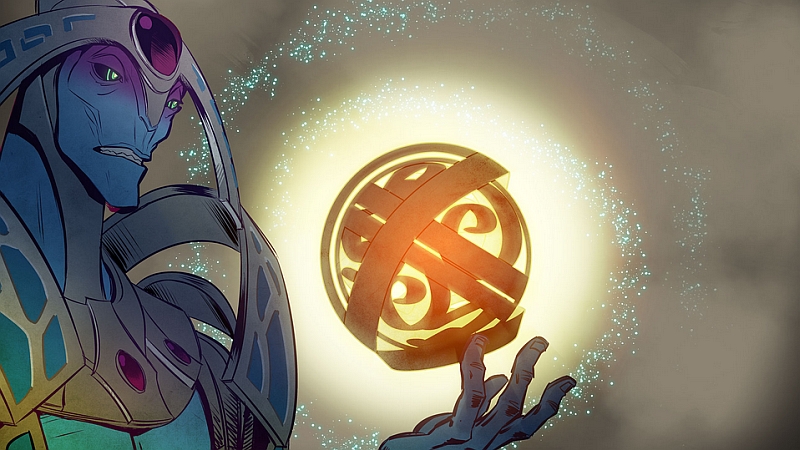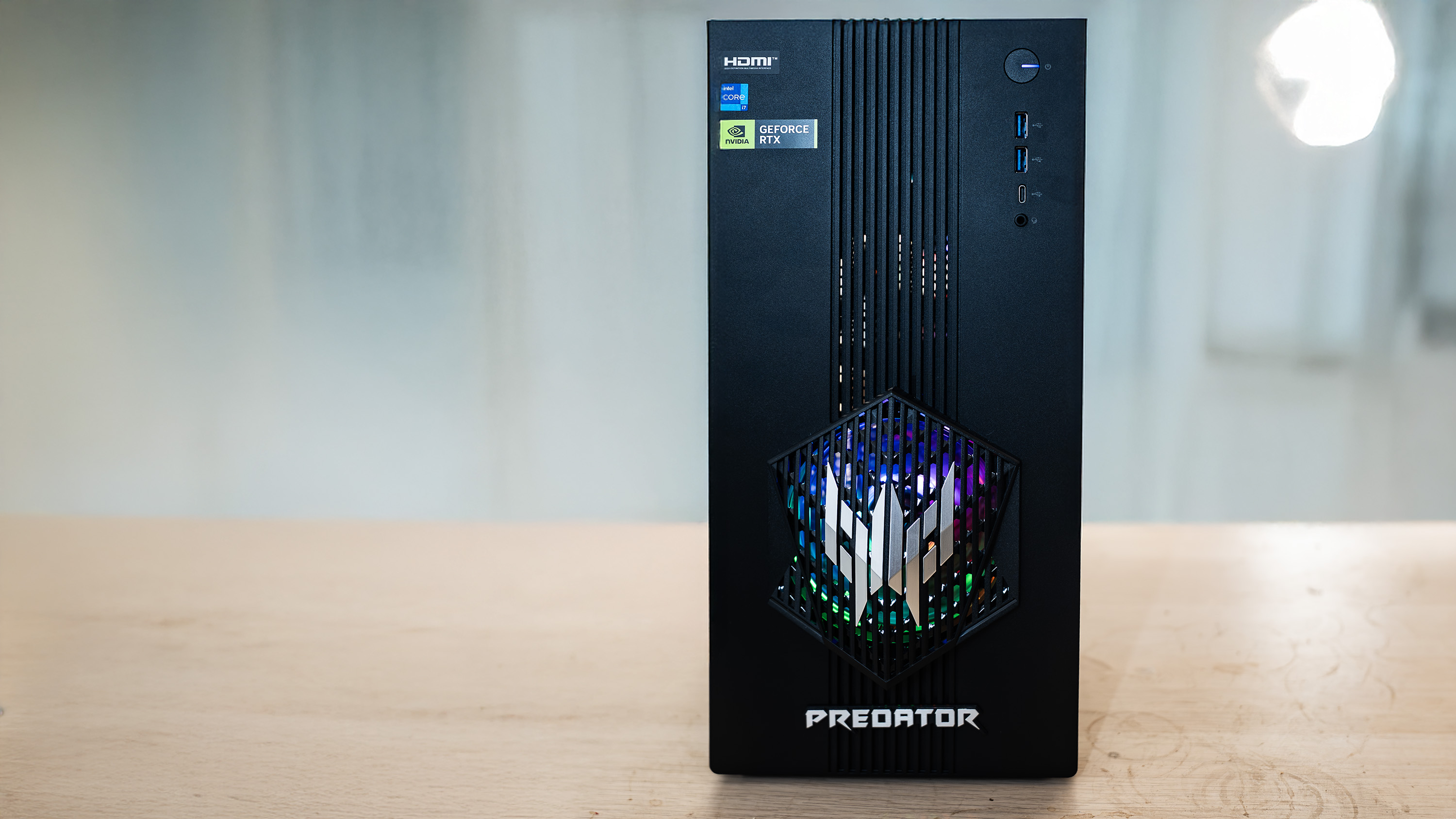Three Lane Highway: looking back at Dota 2 in 2014

Three Lane Highway is Chris' weekly column about Dota 2, and this is the last installment for 2014. We'll be back in January!
Dota 2 is a game about momentum. That's an often-repeated truth—it's one of the best ways to explain the drama of a competitive match without getting into the inaccessible specifics of high-level play, and it's a piece of advice that I return to over and over as I try to get better at the game. The momentum you build in the early game is important, but what wins matches is your ability to translate that momentum into a strategy that leads, step by step, to the enemy ancient. A dominant start is great, but it needs focused guidance to make good on its potential.
I am a middling Dota player at best, so it's in the midgame that most of my matches stall. Luckily, I can rely on the fact that most of the people I'm matched with are bad at closing out games too. The story of Dota, most of the time, is the story of a team with a bunch of kills and big items trying to summon enough collective will to achieve something in the here and now. It's the story of people wandering off to farm for no reason, of Roshan attempts left uncontested and teamfights lost because the carry has decided to chase Puck halfway across the map rather than pin down the soft and slow enemy supports left behind. Of a lack of focus, in short, and of the faint disbelief that comes with losing from an advantage: 'we were fifteen kills ahead! Why are they knocking over our tier four towers?'
This is also, I think, a fairly good metaphor for Dota 2 as a whole in 2014. This was the year that, after the giddy rise of the game's first two years and the triumph of its departure from beta in 2013, Dota 2 settled into its all-important midgame. And, consistently, what we saw spoke to a mellowing scene and a downward shift in momentum.
Four new heroes were released in 2014 compared to ten in 2013, and two of those arrived right at the beginning of the year—so much so that Terrorblade and Phoenix feel like part of the previous set. An equally dramatic shift occurred the previous year, of course (more than thirty heroes were added in 2012), but it nonetheless speaks to a slower rate of change. The coming engine update and addition of custom game modes will be the most significant thing to come to Dota 2 since its inception, but they arrive at the expense of the Diretide and Frostivus events—and, I suspect, at the expense of Winter Wyvern, Abyssal Underlord, and Arc Warden.
For Valve's part, they've actually got much better at talking to fans and setting expectations—but the nature of that communication has always been 'check back in 2015'. It's like struggling through your midgame and deciding that you're going to take the game late. "Just farm and we'll be fine" is often good advice, but it's hard not to feel some of the same inertia, that nagging concern about whether it's all going to be worth the wait, when so little happens for so long.
If the internal development of the game has entered a kind of passive hibernation, then the growth of the professional scene is defined by a fitful emergence into the real world. The relative simplicity of the last couple of years is over: there are dozens of tournaments now, arguably far too many, and not a single event I've attended this year has been free from technical or scheduling problems of some kind. Top-tier players feel overstretched and under rewarded, and play and audience numbers both suffer as a result. EternaLEnVy's blog on this subject has its detractors, but a lot of what he says is believable in a scene that has grown this quickly and with this little guidance.
Keep up to date with the most important stories and the best deals, as picked by the PC Gamer team.
E-sports has ever been thus, and the solution is never easy to come by. Centralised control a la StarCraft's WCS can kill momentum just as readily as a run of badly-managed individual events, and besides it's an approach that runs so counter to Valve's philosophy that we might as well write it off as a possibility right now. Valve's faith in the wisdom of crowds is rewarded when the data they gather is processed by a team that understands the limitations of that process. Ceding control of the professional scene for most of the year to a scattering of e-sports organisations doesn't constitute quite the same thing: it's chaos that can only resolve itself by passing through periods of rough adolescence. That's what this year has been, I think: the overconfident teenage Dota 2 scene stumbling into arenas that are too big for it, business deals that do not benefit it, and schedules that it cannot sustain.
That this year's International was a bit of a let-down is actually a separate problem, one that stems from Valve's own stop-and-start growth as an event showrunner. Could they have anticipated that the popularity of exclusive Secret Shop wizard hats would drain a third of the arena at any given time? Probably not. Should they factor that in next year? Absolutely, yes. Could they have guessed that the metagame would stabilise so absolutely—and in such a boring way—right before the grand finals? No. Does it require a response? Again, yes.
2014 revealed 2013's wonderful International to have been a perfect storm in many ways: a confluence of a dynamic scene, fluid metagame and intimate venue that well suited the type of event that I associate Valve with. It can be that way again, I think, but work needs to be done both on the game and on the structure that surrounds it. Meanwhile, the broader pro scene needs to find its feet again, and stabilise long enough for accessible narratives to emerge that we can watch play out on the road to TI5.
This has been a muted year for Dota 2, but it is not—to borrow one of the community's favourite phrases—a dead game. Nor is it dying. It's simply reached the point where, for the first time, growth for growth's sake isn't good enough: where momentum needs to be matched with strategy. Dota 2 just lost that big teamfight around the nineteen minute mark that tells you you're in for a fifty minute epic. Victory is on the cards, but now it's going to take work.
Happily, I think that's what is happening. Valve need the technical apparatus in place to allow them to update the game regularly and sustainably, and that's exactly what they've spent so long creating. The new engine will enhance their ability to entertain the community, and custom game modes open the door to a potentially-infinite source of new ideas. Patch 6.83, released this week, continues the work 6.82 started. Dota 2 is slowly evolving into its next form, and while that work started in 2014 I think we'll feel the result most keenly next year. Finally, the pro scene will be forced to change. MLG and JoinDota are taking an active role in restructuring and unifying fractured tournaments into something better, and player feedback (even if it comes in the form of protest) should force other showrunners to seriously consider the logistical task they're setting themselves when they go for this venue or that schedule.
You know that bit, in a Dota match, when your team loses momentum and somebody immediately taps out 'gg'? That's what I think we've seen in the last couple of weeks. 2014 was a stall, but not the end—and if anything, Dota 2 looks ready to take this one very, very late.
To read more Three Lane Highway, click here.
Joining in 2011, Chris made his start with PC Gamer turning beautiful trees into magazines, first as a writer and later as deputy editor. Once PCG's reluctant MMO champion , his discovery of Dota 2 in 2012 led him to much darker, stranger places. In 2015, Chris became the editor of PC Gamer Pro, overseeing our online coverage of competitive gaming and esports. He left in 2017, and can be now found making games and recording the Crate & Crowbar podcast.


